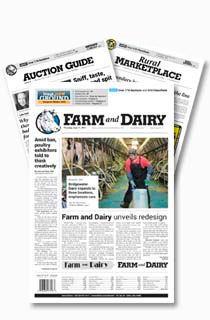OVERLAND PARK, Kan. – Pete Anderson, vice president of sales and technical services for VetLife, told the attendees at the Beef Improvement Federation Annual Research Symposium in Fort Collins, Colo., that there are a number of factors besides genetics that impact beef marbling and quality grades.
Anderson said, “Since approximately 50 percent of the U.S. fed cattle are marketed on a value-based system that is largely driven by marbling scores and resulting quality grades, it is important that we understand all the factors that beef quality grades.
Not understood. “Marbling is a complex biological trait that is not well understood. Research shows that once an animal’s genetic marbling capability has been determined, there are still numerous factors that can negatively and positively impact quality grade.
“These factors include placement factors, prefeedyard nutrition and health, feedyard nutrition and health and endpoint selection.”
Carcass data from more than 20 million animals in VetLife’s Benchmark database shows that sex of the animal, placement age and weight as well as the season of the year have an impact on quality grade.
The data indicate that overall, heifers grade higher than steers with more premium quality grades, fewer penalty grades and greater carcass value.
Weights. Benchmark data also indicates that steers and heifers placed on feed at lighter weights graded better than animals placed on feed at heavier weights.
Anderson said, “We cannot directly correlate placement weight with an animal’s age, but, on average, a population of 400-pound animals will be younger than a population of 800-pound animals.
“This data disproves the myth that calves don’t grade as well. In fact, research has shown that calves reach subcutaneous fatness endpoints at lighter weights and younger ages than yearlings.”
Seasonality also has significant effect on quality grade. The Benchmark database shows a very predictable seasonal trend. Quality grade is highest in January and February and lowest for cattle harvested in September and October.
There are two seasonal factors that are likely to influence quality grades: photoperiods (the amount of daylight), and the less obvious factor, variation in prefeedyard nutrition.
Cattle harvested during the low grading months likely spent time on lush pastures prior to being placed in a feedyard.
Vitamins. Recent research has shown that the high levels of vitamin A in grass inhibit the animal’s ability to deposit fat for marbling. Since it takes the first 100 days on feed for beef animals to deplete these high levels of stored vitamin A, cattle that consumed fresh green pasture have a more difficult time marbling and achieving higher quality grades.
Consuming high levels of vitamin A is not the only prefeedyard nutritional factor that impacts marbling.
In fact, any nutritional insult anytime during the animal’s life will reduce marbling. Nutritional insults include drought, cows that produce insufficient quantities of milk and a number of other factors.
Research has shown that marbling of calves from poor-milking cows can be improved with a corn-based creep feed.
To have an impact on marbling, feedstuffs must preferentially make glucose available to the muscle.
Negatives. One of the strongest statistical relationships in the Benchmark database is a negative correlation between either death loss or medicine use and the percentage of animals grading Choice or better.
Those lots of cattle that have high morbidity and mortality invariably grade poorly, relative to the rest of the population.
Many Benchmark members assess the health risk of incoming feeder cattle as low, medium or high.
The data show that the higher the risk score, the poorer the quality grade, even when the cattle get straightened out and achieve carcass weights equal to or greater than the lower risk cattle.
Theory. Researchers have conducted studies to determine if limiting feed intake would decrease marbling scores or quality grades; the theory being that to express their genetic potential to marble, cattle must have daily caloric intakes adequate to sustain normal levels of growth.
An analysis of carcass results and performance parameters – average daily gain, daily intake, feed conversion, final weight and percentage of Yield Grade 4s – showed it is very difficult to find a correlation between these basic feedyard parameters and the percentage of cattle grading choice.
Get 4 Weeks of Farm and Dairy Home Delivered









